
Spring Walleye Rise to the Occasion
With unseasonably warm temperatures this past winter, many anglers already have their boats out of storage and ready to chase down some early spring walleye.
 Veteran walleye guide, Ross Robertson, has fished walleyes on the Great Lakes for 30-years, which has led him to some proven theories that should help you put more fish in the boat this spring.
Veteran walleye guide, Ross Robertson, has fished walleyes on the Great Lakes for 30-years, which has led him to some proven theories that should help you put more fish in the boat this spring.
Lure Speed Trumps Water Temps
“People look at water temperature and think of it’s the be all end all. I pay very little attention to it,” Robertson said.
Instead, the most critical component of his spring program is the true speed of the lure, which relies on the FishHawk X2 Trolling System to precisely measure.
“Just because the GPS which measures speed over ground says we are doing 1.8, doesn’t mean we are,” he said. “You need to use a Fish Hawk to know your true lure speed. Some days, they want it exceptionally slower or faster than we typically think what the norm is, and that can change hour to hour. Just because it’s cold doesn’t mean you have to go slow, and just because it’s warm doesn’t mean you have to go fast,” he said.

Robertson solved many of the issues he had with the original X4 unit by modifying it. The result, for over two years, he worked with FishHawk to design an identical unit to the X4 but was fully portable. “The whole point is that if you have a small boat, want to bring the unit into a buddies salmon boat, or couldn’t have or want downriggers, the X2 is perfect,” Robertson started. “Right now, I keep my X2 in the front rod locker runs on batteries. If I’m jigging and I decide I have to troll, I can drop the probe beside the console just above the fish, and I will know exactly the speed my boat is traveling off.” He prefers to drop the probe beside the console to avoid interfering with any of the lines he has out the back of the boat, transducer wires, or his main or kicker motor.
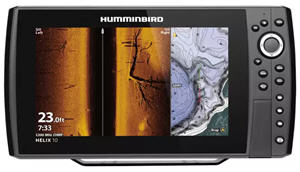
GPS G3N Fishfinder/Chartplotter
Robertson is extremely cautious never to spook the fish he’s targeting, so he’ll drop the probe 5-feet short of where the fish are. His Humminbird Helix 10 Chirp Mega SI+ GPS G3N units have been carefully dialed so precisely that they’ll even display the probe from his X2 as it drops it down the water column towards the fish.
The most convenient time to monitor lure speed is when the lake is flat calm. Often, an angler will be the only boat on the lake, trolling through a school of walleye and the rods fire off. The fishermen will turn their boat to make a pass from the opposite direction. They can see the fish are still marking on their electronics without a bite. What the angler neglects to take into consideration is that natural currents on the Great Lakes can speed baits up and slow them down.
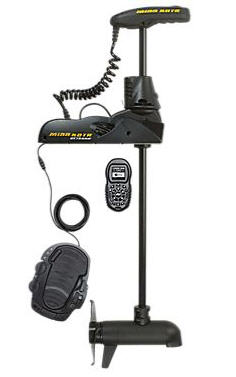
Mount Trolling Motor
“I guarantee those anglers were either way above or below the fish or that crankbait was wobbling not enough or too much. Sure, you can speed up and slow down to figure it out, but if you are going to spend a ½ hour making 200-yard passes and waste time with no bites- that’s inefficient. When you drop that probe, it will show you the true speed of the lure,” Robertson said.
Trolling Tricks of the Trade
Running “S” patterns allows your crankbait to speed up and slow down, which can often trigger a bite as well as using the remote for his Minn Kota Ulterra Bow-Mount trolling motor.
“When fish keep coming unbuttoned, or a fish is barely moving a planer board, but you know it’s there, I’ll hit the rabbit button and take the stretch out real fast,” Robertson started. “Often, even if you miss that fish, you’ll trigger a double-header on the other side of the boat.”
Technically Speaking - Targeting Walleye

are moving, and they are eating.
Time and again, Robertson will pull his Ranger Fisherman 621 into the dock at the end of the day only to hear how everyone had a horrible day on the water, yet his clients smashed them. The problem- everyone else was targeting the walleye on the bottom. Sure, they’ll be in high numbers, and they might even be big walleye, but they’re typically inactive and quite often are white bass, big baitfish, or sheepshead. Most anglers target those fish because they appear in high numbers as opposed to one or two in the upper part of the water column.
“You have to remember that a cone is 2 to 3 times bigger at the bottom than at the top. You won’t mark more fish at the top, but that one fish represents multiple, whereas if they are on the bottom, they’ll more easily show since there’s three times more coverage from the transducer,” Robertson started. “A cone angle in 30-feet of water is roughly 19-feet across but is 6-feet across 1/3 of the way down. One fish displayed up top is like seeing four down below. Here’s the key- those fish in the top 25% of the water column are moving, and they are eating.”

Nylon Monofilament
Fishing Line
Robertson hates to admit it, but he shared a trade secret too good to keep to himself. He uses the Side-Imaging feature on his Humminbird marine electronic units to see those high fish that sometimes don’t show up with 2d imaging. More importantly, he’s looking for bait, because even though those fish show up as a white dot on the side-imaging screen, if he can find baitfish, he knows the walleye will either be there or swim up to the dinner plate.
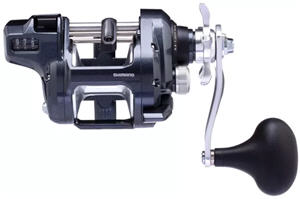
Tip: Robertson found that using 2d imaging while running at 25mph is best for seeing and marking fish.
Tackle Logic - Bring a Stack of Planer Boards
Leave the downriggers, dipsey divers, and jets at home, but make sure you have a stack of planer boards in the boat. In States like Ohio, Wisconsin, Pennsylvania, and New York, anglers are permitted to run three lines per angler. The benefit is that anglers can cover a ton of water. When running planer boards, Robertson runs the 8’3 Telescoping Shimano Compre Walleye Trolling rod paired with a Shimano Tekota 500 LC Counter fishing reel spooled with 20-pound Sunline Super Natural monofilament line.

Robertson runs at least three planer boards out each side of the boat 3 feet from each other. On Lake Erie, he’ll run boards 40, 80, and 120- feet from the rod tip to the board and an additional 50-feet on Lake Ontario. Robertson has consistently found that the outside boards get the best action. The natural progression of netting those outside board fish, his inside, and middle boards get rotated to the outside. As the da goes on, he’s able to figure out what crankbaits and colors are producing quickly. Sometimes he’ll even switch the boards from his starboard to port side and vice versa to make sure every lure gets fair rotation.
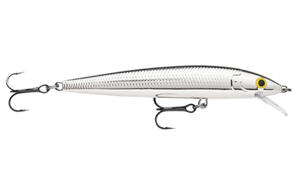

That said, he has some basic rules of thumb. Not until late spring after the post-spawn when fish move deeper, and fish are slower does he fish worm harnesses. Pre-spawn his program centers on larger crankbaits.
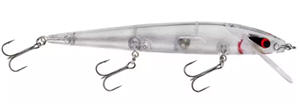
“I don’t use a lot of small baits. During March and April, any minnow is the size of a thumbnail or that lasted through the season, which is considerably bigger. Early season/pre-spawn walleyes will eat much bigger bait. Monster walleyes like to consume giant white bass and white perch. Smaller fish don’t like them because they’re spiny,” Robertson said.

Robertson keeps an assortment of white, clear, chrome, and baits with orange bellies. From there, he can fine-tune his bait rotation through accenting colors. Robertson keeps a good selection of Rapala Husky Jerks, Reef Runner Deep Diver, Bandit Lures, and the Smithwick Perfect 10 crankbaits. He’ll pay close attention to what colors are firing, and he’ll generally rotate those hues onto all of his boards. He usually runs deep diving baits off of his planer boards, noting that the diving depth on each lures packaging is a good starting point. Online dive chart apps available through the Apple App store are another great resource. He’ll only add weight to those lines if he needs his bait to act more erratic.
- 4252 views

